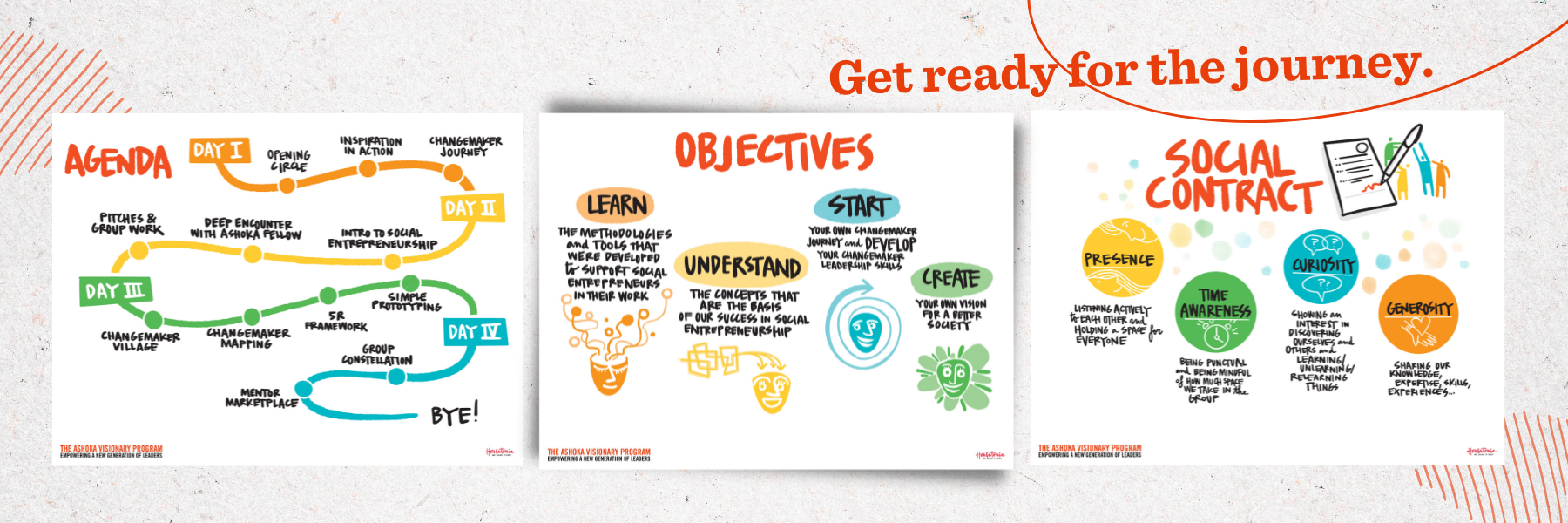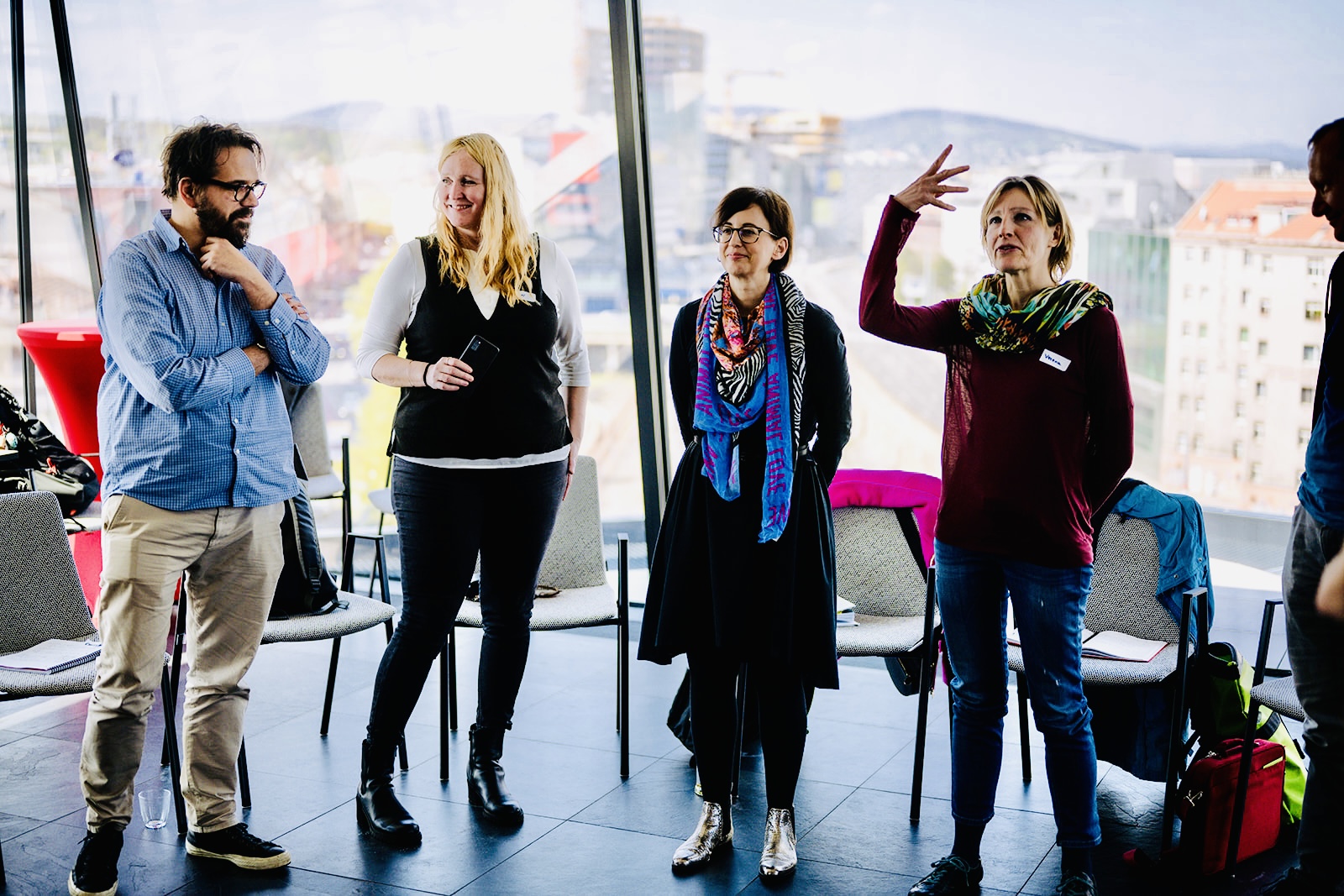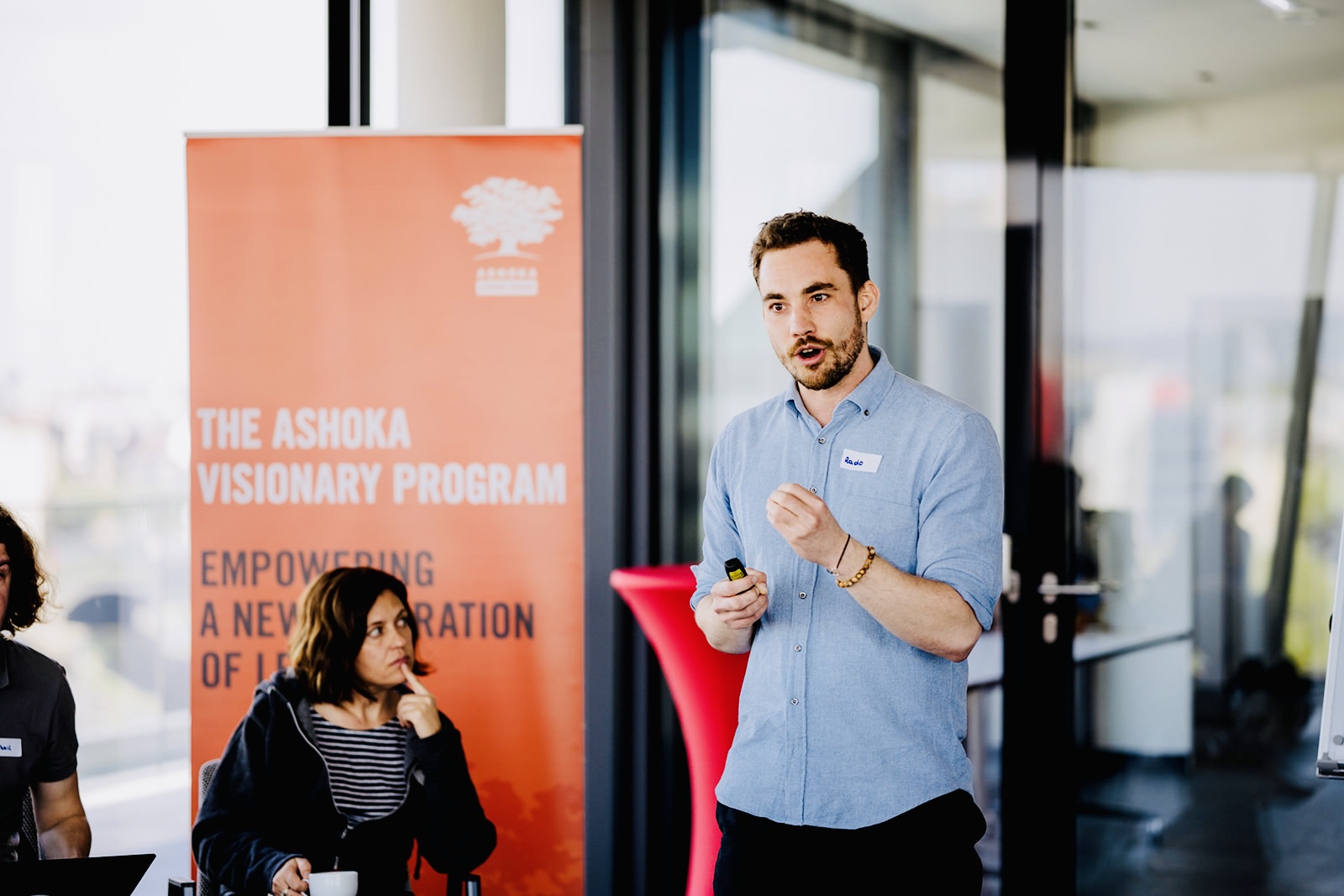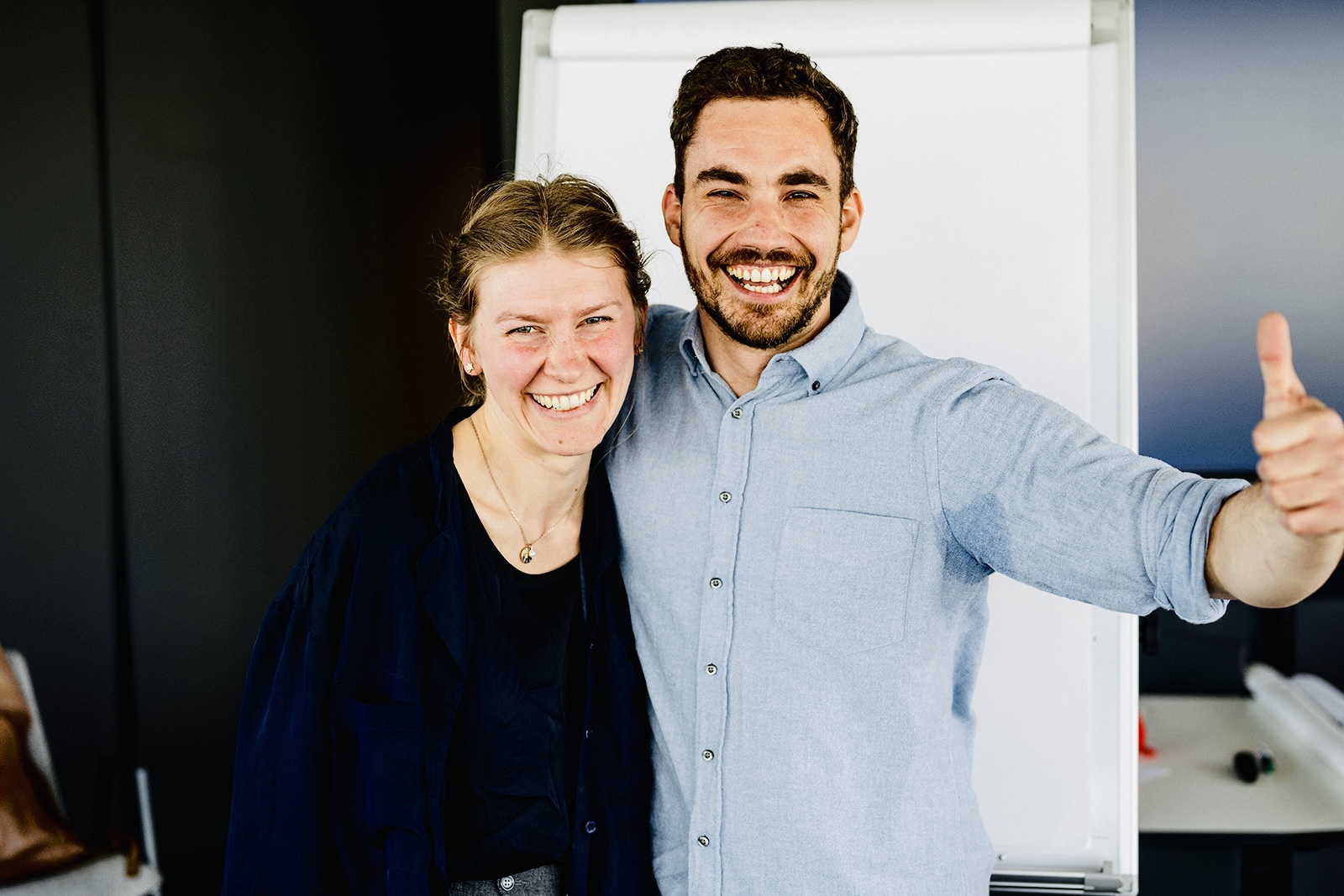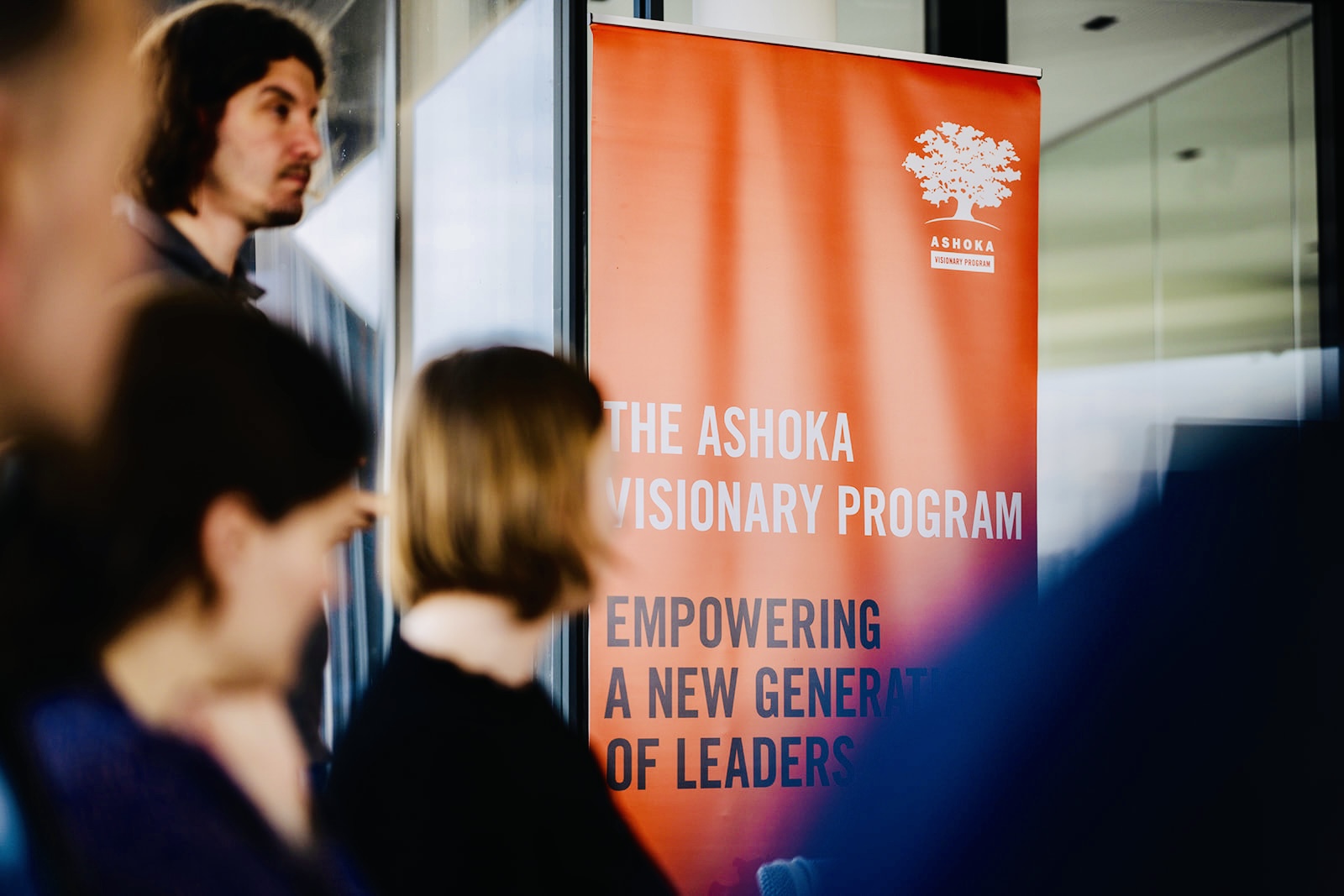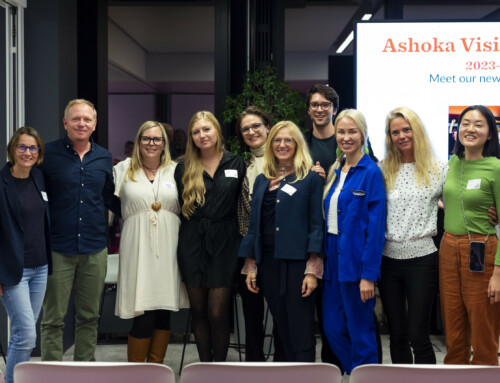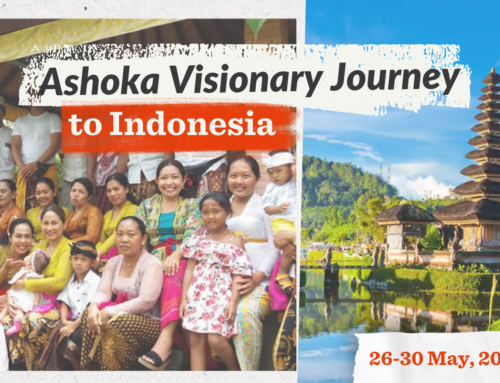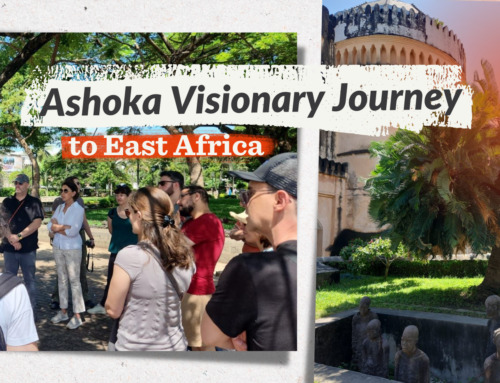The 5 tools of collective impact – how to bring leaders together across sectors

Serious change without cross-sector collaboration is a myth
The Ashoka Visionary Program is enabling collective impact and bringing you inspiration on key ingredients for change. Learn with us, and apply.
Why talk about collective impact? Aren’t we doing enough already, in pockets around the world? Setting up new programs and convincing donors to give us initiatives more money so they scale and help more people? We have big, complex problems to solve. Issues like poverty, health, education, and the environment – that involve many different interdependent actors and factors. Problems largely immune to predetermined solutions. With many important variables that influence the outcome and cannot be predicted in advance. Under these conditions of complexity, predetermined solutions rarely succeed.
And imagine…even if a single solution were known, no ONE individual or organization would be able to gather ALL the players necessary and be successfully done with it. And still, the social sector remains focused on the isolated intervention of individual organizations. In short: we have a problem.
There has to be a better way.
A new way of seeing, learning and doing.
We know that large-scale social change comes from better cross-sector coordination rather than from the isolated intervention of individual organizations. If it were that easy?
It’s hard to bring together people who have never collaborated before. The competition and mistrust among funders and grantees, the struggle of agreeing on shared metrics, the risk of multiple self-anointed backbone organizations, and the perennial obstacles of local politics – all of this is real, too.
But collective impact initiatives are already real. And they have key ingredients that make them successful.
“It is because a core group of community leaders decided to abandon their individual agendas in favor of a collective approach.” – The success story of Strive
Imagine witnessing a major student achievement crisis in the public school system. And then setting out to grow high school graduation rates, fourth-grade reading scores, math levels, the number of preschool children prepared for kindergarten. Despite recession and budget cuts for the public school system. NOT creating new programs and failing like others, but focusing the entire educational community on a single set of goals – developing shared performance indicators, discussing their progress, learning from each other, aligning their efforts to support each other.
This is what Strive did, a nonprofit subsidiary of KnowledgeWorks, that brought together local leaders to improve education throughout two States of the U.S. In the four years since the group was launched, Strive partners have improved student success in dozens of key areas across three large public school districts [the article was published in 2011]. But how did they do it, and can you do it too?
“Why has Strive made progress when so many other efforts have failed? It is because a core group of community leaders decided to abandon their individual agendas in favor of a collective approach to improving student achievement. More than 300 leaders of local organizations agreed to participate, including the heads of influential private and corporate foundations, city government officials, school district representatives, the presidents of eight universities and community colleges, and the executive directors of hundreds of education-related nonprofit and advocacy groups…..These leaders realized that fixing one point on the educational continuum—such as better after-school programs—wouldn’t make much difference unless all parts of the continuum improved at the same time. No single organization, however innovative or powerful, could accomplish this alone. Instead, their ambitious mission became to coordinate improvements at every stage of a young person’s life, from “cradle to career.”
Strive, both the organization and the process it helps facilitate, is an example of collective impact, the commitment of a group of important actors from different sectors to a common agenda for solving a specific social problem. Unlike most collaborations, collective impact initiatives involve a centralized infrastructure, a dedicated staff, and a structured process that leads to a common agenda, shared measurement, continuous communication, and mutually reinforcing activities among all participants (see next section).
What’s so special about collective impact initiatives?
The commitment of a group of important actors from different sectors to a common agenda for solving a specific social problem – that is special. Unlike most collaborations, collective impact initiatives involve a centralized infrastructure, a dedicated staff, and a structured process that leads to a common agenda, shared measurement, continuous communication, and mutually reinforcing activities among all participants. Successful collective impact initiatives typically have five conditions that together produce true alignment and lead to powerful results:
- Common agenda: All participants have a shared vision for change including a common understanding of the problem and a joint approch to solving it through agreed upon actions.
- Shared measurement: Collecting data and measuring results consistently across all participants ensures efforts remain aligned and participants hold each other accountable.
- Mutually reinforcing activities: Participant activities must be differentiated while still being coordinated through a mutually reinforcing plan of action.
- Continuous communication: Consistent and open communication is needed across the many players to build trust, assure mutual objectives, and create common motivation.
- Backbone support: Creating and managing collective impact requires a separate organization(s) with staff and a specific set of skills to serve as the backbone for the entire initiative and coordinate participating organizations and agencies.
As we said, predetermined solutions don’t work in a complex world. Through the interaction of collective impact, individuals and organisations move away from that fixed path and start behaving differently, in an aligned way. This progression greatly accelerates social change without requiring breakthrough innovations or vastly increased funding. Previously unnoticed solutions and resources from inside or outside the community are identified and adopted. Existing organizations find new ways of working together that produce better outcomes.
supowerpowers: heightened vigilance that comes from multiple organizations looking for resources and innovations through the same lens, rapid learning that comes from continuous feedback loops, and the immediacy of action that comes from a unified and simultaneous response among all participants.
The paradox – does philantropy need a shift?
To be successful in collective impact efforts we must live with the paradox of combining intentionality (that comes with the development of a common agenda) and emergence (that unfolds through collective seeing, learning, and doing). For funders this shift requires a different model of strategic philanthropy in which grants support processes to determine common outcomes and rules for interaction that lead to the development of emergent solutions, rather than just funding the solutions themselves.
What now?
Collective impact success favors those who embrace the uncertainty of the journey, even as they remain clear eyed about their destination. If you embark on the path to collective impact, be intentional in your efforts and curious in your convictions. Let’s keep combining intentionality, through common agenda-setting and cross-organisational cooperation, with emergence in the moment. Are you ready to see how you can build collaboration around the success criteria of collective impact? Are you ready to be the person it needs for that?
Sources to read on
Read on to dive deeper. This text summarizes key ideas from two articles published in the Stanford Social Innovation Review – Informing and inspiring leaders of change:
- Collective Impact (by John Kania & Mark Kramer, 2011)
- Embracing Emergence: How Collective Impact Addresses Complexity (by John Kania & Mark Kramer, 2013)
Apply to join the Ashoka Visionary Program to experience collactice impact over 9 months and 7 modules of the transformative learning journey for leaders of change.
(pictures by Walter Skokanitsch)
Now is your turn. – Are you ready to set sail with the upcoming program?⛵
The Ashoka Visionary Program supports executives, current and future entrepreneurs, changemakers from any sector – corporate, public, civil society or foundations. Participants strive for new careers, business and social impact pathways in society.
Let’s see if the program is the right place for you to thrive (or for someone you know and care about). Can you answer all of this with YES?
- ✅ You want to listen to the life stories of Ashoka Fellows and other ground-breaking social entrepreneurs, ask them all your questions and reflect on them for your own journey?
- ✅ You want to get access to the field of social entrepreneurship, accelerate your changemaking and responsible leadership skills, and/or reflect on your personal changemaking journey for more purpose?
- ✅ You want to implement learnings into practice by supporting a social entrepreneur or developing your own social enterprise?
- ✅ You don’t want to do it all alone, and instead want to exchange experiences with like-minded leaders from diverse sectors, create collective impact together and join a supportive alumni network to accompany you further?
- ✅ You can commit to attending 7 practice-based modules, of 15 days in total (Friday-Saturday), between October 2023 and June 2024?
📆 To learn more about the program, you’re invited to our last upcoming info call:
- 20 June, 09:00 – 10:00 (CET)
Sign up here.
All info about topics, putting learnings into practice, requirements and more on the website.
Immerse yourself in a world where positive change is possible, and create it yourself.
